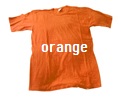
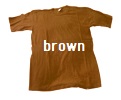

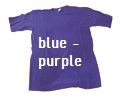
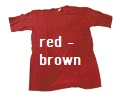
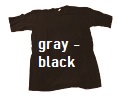
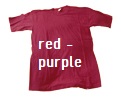
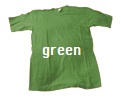
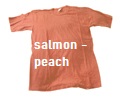
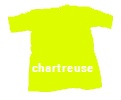
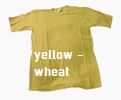
- Making Natural Dyes from Plants
The easiest dyes to apply are the substantive dyes - so called because they can be fixed within the fibers without the assistance of any other substances. Substantive dyes are often those that are rich in tannins, including barks and the leaves and fruits of trees, such as walnut and staghorn sumach.
Dyes in the second category are known as vat dyes and fermentation is one of the processes involved in the making of "vat dyes". They are also substantive dyes and require no mordant. They include indigo and woad and Tyrian or Imperial purple. The coloring matters of dyes in this category is not directly soluble in water: so the dyestaff cannot just be simmered to extract dye color.
Dyes in the third category are known as adjective dyes, because they need a mordant in order for the colors to develop fully and fix permanently to the textile fibers, Many natural dyes fall into this group, including traditional dye plants such as weld and logwood. - Valuable plant dyes:
Due to the scarcity of plants producing red and blue dyes, any plants capable of producing shades of red or blue were of great value to dyers. For this reason (and also because of their good fastness to light and washing) madder, indigo and woad became some of the most important dyestuffs.
Plants in the madder family, or related species, provided sources of red dye in many parts of the world and madder is one of the simplest dye plants to cultivate. Another red dye known as brazilwood and originally, mainly from India and the East Indies, comes from trees of the species Caesalpinia. Safflower, used by the early Egyptian dyers, is remarkabel in that both a yellow and a red color can be obtained from its tiny petals.
Purple is not a color found in many plants, however, a purple dye known as logwood can be obtained from the tree Haematoxylon campechianum, which grows in parts of South America and the West Indies.
For at least 2000 years, lichens have been a source for both purple and red dyes. The purple dye compound can be applied without a mordant and is produced by steeping certain lichens, notably Roccella, Ochrolechia, Umbilicana and Lasallia, in a solution of ammonia. - Gathering and storing plant material for dyeing:
You want to be sure to use ripe, mature plant material and always use fresh, not dried. Dried plant material will usually give you muted colors and sometimes no color at all. Remember, never gather more than 2/3 of a stand of anything in the wild when gathering plant stuff for dyeing.
Chop the plant material very small to give you more surface area. If the plant is tough, like yellow dock roots, smash the root with a hammer to make it fibrous. This will also give you more exposed surface area. If you know you won’t need it for a while, but the plant is at its peak, like nettle, you can chop it up and freeze it for a few months. Just be sure to label it. - Preparing fibers for the dye bath: Before you start the dyeing process, you’ll want to get your fabric ready. First, wash the fabric. Don’t dry it though – it needs to be wet. Yarns also need to be wound into skeins. Animal fibers cannot tolerate sudden changes in temperature. If the dye bath needs to be simmered, first put the fibers in slightly warm water and then heat them slowly. After the dyeing process, animal fibers should be allowed to cool in the dye pot before they are rinsed.
- Color Fixatives (Mordant):
Then prepare your fixative or “mordant.” This is to help the fabric take up the natural dyes more easily. For berries, you’ll want to use salt and for any other plant material, you’ll want to use vinegar. Here are the measurements:
• Salt: dissolve ½ cup salt in 8 cups cold water
• Vinegar: blend 1 part white vinegar with 4 parts cold water
Natural plant materials - such as rhubarb leaves (oxalic acid) or tannin from oak galls or staghorn sumach leaves - are also used as color fixatives.
Some people choose to use chemicals - such as alum (aluminium sulfate, aluminium potassium sulfate, aluminium ammonium sulfate, aluminium acetate), copper sulfate ('blue vitriol'), iron liquor (soak rusty nails or pieces of iron in a mixture of two pieces of water and one piece of vinegar) - to fix dye color to the fibers, and may use dye pots made of aluminium, copper or iron instead.
Place your damp fabric in the fixative solution for an hour. Rinse with cool water when done. Mordanted fibers can be dried, labeled, and stored indefinitely before use.
NOTE: Color fastness of natural dyes to washing and light is in general inferior to well-selected and applied synthetic dyes, and normally does not meet consumer demands. - Preparing the dye solution: Some flowers and petals give clearer colors if they are not processed for long periods. Pouring boiling water over the flowers and leaving them to soak, may in some cases produce better colors than simmering.
Barks are best soaked for several days or even weeks in cold water before processing. Then simmer them for one hour. Never boil bark.
Leaves often yield enough color for the first dye bath if they are soaked in cool water for several days. Pour boiling water on them first to speed the process.
Berries should be crushed, then simmered for an hour or so to extract the color. - The Dye Bath: Before you start, cover the surface of your work area with a newspaper. Be sure to wear gloves so you only color the fabric, not your hands.
1. Place the plant material in a large non-reactive pot (like stainless steel or glass). Remember the dye could stain some pots and spoons, so use these only for dyeing.
2. Fill the pot with twice as much water as the plant material.
3. Simmer for an hour or so, until you get a nice dark color.
4. Strain out the plant material and return the liquid to the pot.
5. Carefully place the fabric in the dye bath and bring it to a slow boil. Simmer for an hour or so, stirring once in a while.
6. Check your fabric. Remember, it will be lighter when it dries. An hour should produce nice color, but darker hues can be achieved by allowing it to sit longer, even overnight. Turn the pot off after an hour and allow the fabric to sit in the warm water as long as needed.
7. When you get the color you want, take the fabric out and wash it in cold water. Expect the color to run some as the excess dye is washed out
8. Dry as usual. - Color modifiers: Color modifiers are substances applied after the initial dyeing process to change the shades produced from the first dye bath. To make acid modifier solutions, citric acid crystals are dissolved in water. Washing soda or soda ash is used to make alkaline modifiers. Copper sulfate crystals make copper modifier solutions and ferrous sulfate crystals make iron modifiers. Some familiar household products such as ammonia (a few drops) and clear vinegar (1-2 teaspoons) can be used as modifiers. Wood ash water - using cold ashes from a stove - is another useful alkaline modifier. Steep the ashes in a bottle of water for one week until the slimy liquid turns yellow and decant without disturbing the ashes. Add about half a cupful to the dye bath.
Unless modifiers are already in liquid form - such as clear vinegar, or copper or iron liquors - it is advisable to make a fairly strong solution of each modifier (1 tablespoon of modifier crystals dissolved in 1 liter of boiling water) and then add a little, either to the used dye bath or to a separate pot of water. The first method means that the used dye bath must first be divided into separate pots, one for each modifier, adding more water if necessary.
Modifier solutions can be stored in airtight glasses until required. - Classification of Natural Colorants on the Basis of Chemical Structure:
Indigoids: (Indigo and Tyrian purple) are perhaps the most important group of natural dyes and the oldest dyes used by human civilizations. Natural indigo is a dye having distinctive blue color with long history and is regarded as one of the most important and valuable of all coloring matters. Indigo is extracted from Indigofera spp. (Indigofera tinctoria), Perisicaria tinctoria (dyer’s knotweed), and Isatis tinctoria (woad).
Pyridine Based Dyes: Berberine (natural yellow 18; C.I. 75160), an isoquinoline alkaloid with a bright yellow color, is the only natural dye belonging to this class. Some important berberine yielding dye plants are Berberis aristata, Berberis vulgaris, Phellodendron amurense, and Rhizoma coptidis
Carotenoids: also called tetraterpenoids are brightly colored natural organic pigments found in the chloroplast and chromoplast nearly in all families of plants and some other photosynthetic organisms. Only plants, fungi and prokaryotes are able to synthesize carotenoids. The color of the carotenoids is due to the presence of long conjugated double bonds. They absorb light in the 400–500 nm region of the spectrum and this give rise to yellow, orange and red color. Bixa orellana, Crocus sativus, Curcuma longa, Nyctanthes arbor-tristis, and Cedrela toona, are some of carotenoids source plants.
Quinonoids: are widely distributed and occurs in large numbers in nature ranging from yellow to red. Chemical structures of naturally occurring quinones are more diverse than any other group of plant pigments. On the basis of chemical structure these dyes are further classified as benzoquinones, α-naphthoquinones and anthraquinones. Carthamus tinctorius (Safflower), Choloraphora tinctoria (Gaudich), Lawsonia inermis/Lawsonia alba (Henna/Mehendi), Juglans regia (Walnut), Plumbago capensis (Chitraka/Chita), Drosera whittakeri (Sundew), Tabebuia avellanedae (Taigu/Lapachol), Alkanna tinctoria (Ratanjot/Alkanet), Lithospermum erythrorhizon (Tokyo Violet/Shikone), Dactylopius coccus (Cochineal), Kermes vermilio/Coccus ilicis, Laccifer lacca/Kerria lacca/Coccus lacca, Rubia tinctorum, Rubia cordifolia (Indian Madder), Rheum emodi (Himalayan rhubarb), Oldenlandia umbellata (Chay Root), and Morinda citrifolia (Al/surangi/ach) are the natural resources for quinonoids class; subclass anthraquinonoids and naphthoquinonoids.
Flavonoids: provide the largest group of plant dyes ranging in colors from pale yellow (isoflavones) through deep yellow (chalcones, flavones, flavonols, aurones), orange (aurones) to reds and blues (anthocyanins). Various plant sources of flavonoid dyes are Reseda luteola (Weld), Allium cepa (Onion), Artocarpus heterophyllus/Artocarpus integrifolia (Jackfruit), Myrica esculenta (Kaiphal), Datisca cannabina (Hemp), Delphinium zalil (Yellow Larksur), Gossypium herbaceum, Sophora japonica/Styphnolobium japonicum, Butea monosperma/Butea frondosa (Flame of the forest/Palas), Mallotus philippinensis (Kamala), Bignonia chica/Arrabidaea china (Carajuru/Puca), Commelina communis, and Pterocarpus santalinus (Red Sandalwood).
Dihydropyran Based Dyes: These pigments comprise of brazilin (C.I. 75280) from brazilwood (Caesalpinia sappan) and haematoxylin (C.I. 75290) from logwood (Haematoxylon campechianum).
Betalains: are a class of water soluble nitrogen containing plant pigments of the order Caryophyllales which comprise of the yellow betaxanthins and the violet betacyanins. Opuntia lasiacantha and Beta vulgaris (Beetroot) are common natural sources for betalains class of colorants.
Tannins: are astringent vegetable products found in most of the vegetable kingdom. Tannins are obtained from the various parts of the plants such as fruit, pods, plant galls, leaves, bark, wood, and roots. Tannins are defined as, water soluble phenolic compounds having molecular weights between 500 and 3000. Tannins are usually classified into two groups-hydrolysable (pyrogallol) and condensed tannins (proanthocyanidins). The hydrolysable tannins are polyesters of a sugar moiety and organic acids, grouped as gallotannis and ellagitannins which on hydrolysis yield gallic acid and ellagic acid, respectively.
Tannins are primarily used in the preservation of leather. Tannins are used in glues, inks, stains and mordants. Tannins are also used for heavy metal removal in surface water treatment. Tannins play very important role in dyeing with natural dyes by improving the affinity of fibres towards different dyes. By mixing with different natural dyes it gives different shades like yellow, brown, grey and black. Acacia catechu (Cutch), Terminalia chebula (Harda), Punica granatum (Pomegranate/Anar), Quercus infectoria (Gallnut), are plant sources for tannins.